| |
Encourage Symbiotic Mycorrhizal Fungi
Whether you choose to germinate your seeds in pots, seed beds, or one-by-one directly into the soil of their ultimate forest destinations as subcanopy trees, the seeds must be given habitat/soil conditions in which their mycorrhizal fungal partners are ready to immediately help the torreya grow healthy roots and root hairs.
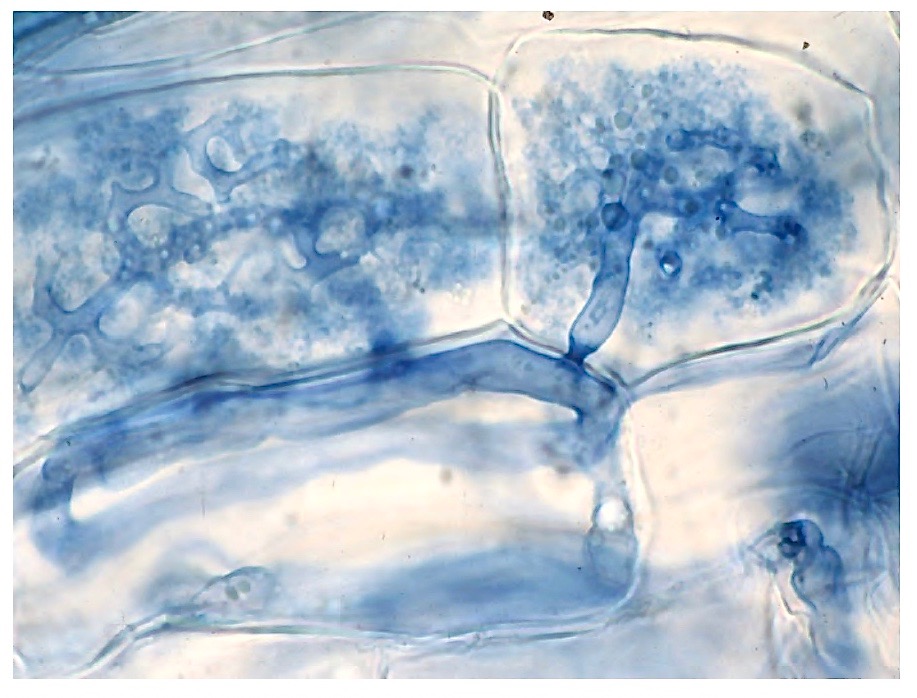 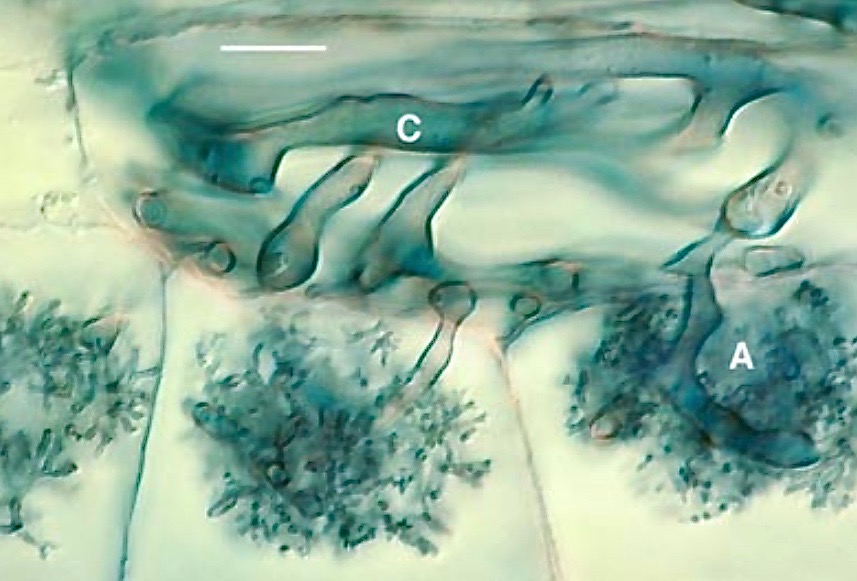 |
|
The type of FUNGAL SYMBIONT that partners with Torreya establishes tree-like (arbor-like) structures within the root cells.
It does not reproduce by above-ground mushrooms, but individual spores within the soil surrounds.
|
LESSON: Because the fungal partners for torreya do not cast any spores into the air, the soil itself must harbor these non-mobile, long-lasting spores. Fortunately, many woody plants, herbs, grasses, and all ferns associate with the same fungal partners that Torreya requires. So healthy forests reliably contain plentiful fungal spores in the soil. But heavily tilled and played-out agricultural fields being recovered into forests may lack the necessary spores in the soil.
UPDATE: Beginning in 2018, researchers began writing about plants having a SEED MICROBIOME. This means that seeds produced by perhaps all plants carry within themselves the propagules of fungi and bacteria that are vital to their germination and early root growth. Learn more at this page on the Torreya Guardians website: "Applying the Plant and Seed Microbiome Paradigms to the endangered Florida Torreya tree".
———
GENUS TORREYA, as a member of the primitive TAXACEAE family of conifers, partners below ground with the Vesicular-Arbuscular Mycorrhizae (VAM or AM) class of beneficial fungi. These fungi are of the "ENDOmycorrhizal" type, meaning the fungal cells penetrate the inside of individual root cells. Indeed, it is the fungus not the plant that grows the actual root hairs!
In contrast, the largest family of conifers, PINACEAE (pine, spruce, fir, hemlock) associate with "ECTOmycorrhizae" (ECM or EM). This mychorrizal type has the fungal cells living in between root cells (and sometimes covering the outside of the root), rather than living within the cells. The plant grows its own root hairs, and the fungal partners then become occupants. HARDWOOD EM TREES include oak, hickory, birch, basswood, poplar.
"Dr. Melissa McCormick (Smithsonian Environmental Research Center) final report of research into the mycorrhizal associations of Torreya taxifolia within its native range along the Apalachicola River in northern Florida and extreme southern Georgia and in several explants from northern Georgia into North Carolina determined that Torreya forms mycorrhizal associations with arbuscular mycorrhizal (AM) fungi. Nearly all AM fungi identified in this study belonged to the Glomus genus. Many species in this genus are known to have a role in protecting host trees against root pathogens. They found a similar diversity of AM fungi associated with native and explanted trees, suggesting that native populations have sufficient diversity of mycorrhizal fungi available to support healthy tree growth. They found that the abundance of mycorrhizal fungi in tree roots (including non-Torreya roots) was higher in garden explants (Atlanta Botanical Garden and Biltmore Gardens) than in native or forest explanted trees. This relationship was likely driven by light available to garden-planted trees to support photosynthetic fixation of carbon, which could then be used to support associations with mycorrhizal fungi. Within each habitat type (garden, forest explant, native), they found that Torreya roots were more heavily colonized by mycorrhizal hyphae than the roots of surrounding trees, suggesting Torreya are strongly dependent on mycorrhizal fungi." — from the "Comments" column of Reports page of the official U.S. Endangered Species Torreya documentation (p. 2, accessed online by Connie Barlow March 2022)
WARNING: TORREYA (and other ENDO-dependent plants) must gain mycorrhizal partners in order to grow ROOT HAIRS.
AM WOODY PLANTS (good for Torreya): Tuliptree, Sweetgum, Maple, Buckeye, Walnut, Catalpa, Cherry, Elm, Dogwood, Gums, Hackberry, Hawthorn, Holly, Locust, Honeylocust, Hophornbean, Magnolia, Redbud
AM HERBACEOUS PLANTS: Ferns, Blackberry, Lily, most flowering herbaceous plants
WARNING: Stay away from ericoid plants (Rhododendron, Azalea, Vaccinium) which not only associate with unique mycorrhizae but often indicate acidic soils.
WARNING: Do not plant torreya near EVERGREEN canopy and subcanopy plants. Late fall and early spring FULL SUNLIGHT CONDITIONS in deciduous forests are crucial times for subcanopy photosynthesis.
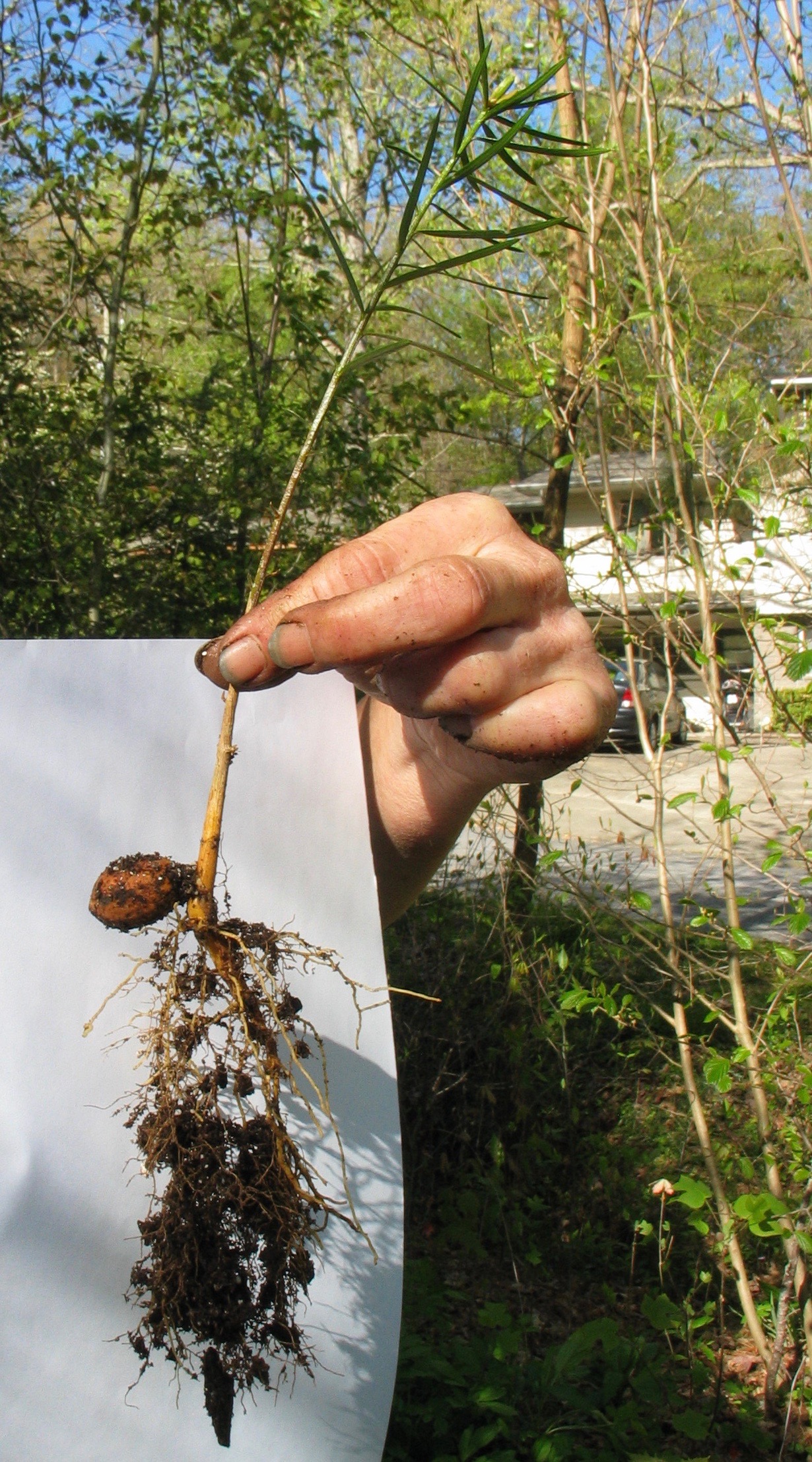 |
|
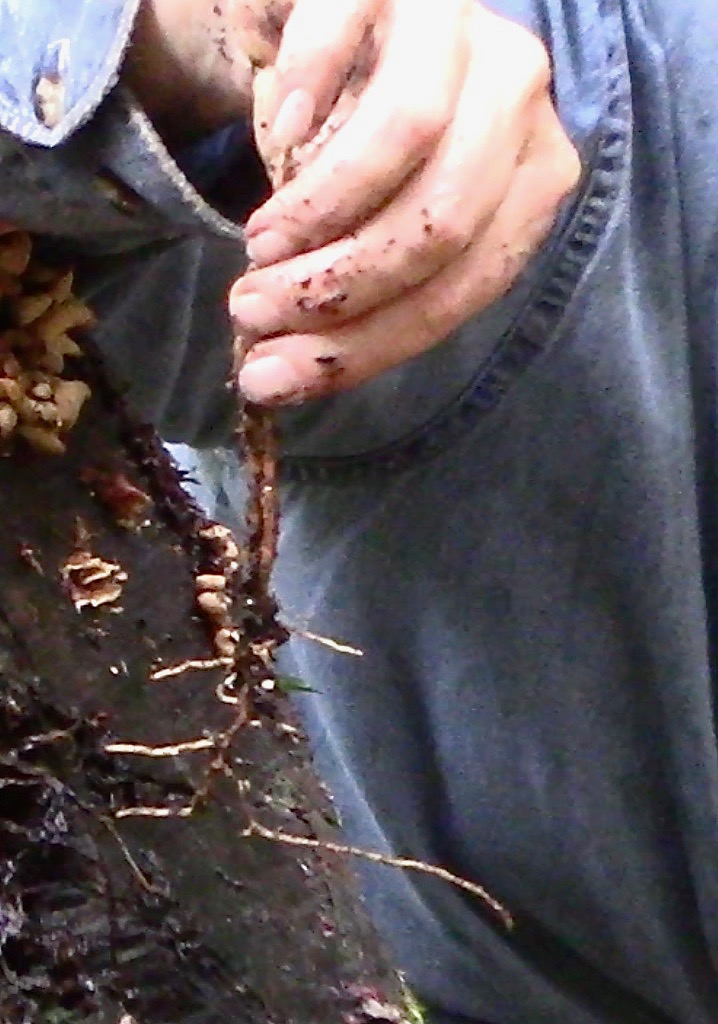 |
|
HEALTHY ROOT SYSTEM
LEFT: This seedling has emerged during its second summer in a rodent-protected germination bed within a semi-shaded forest setting. Before the above-ground growth became visible, the food energy and nutrients stored in the large seed supported growth of a taproot and some lateral roots, while encouraging symbiotic fungal partners to create the root hairs by feeding them food stores, too.
UNHEALTHY ROOT SYSTEM
RIGHT: Although the evergreen leaves (not visible) of the above-ground growth look healthy, the root system, even after 5 years in its germination pot, show an utter lack of root hairs — and bottoming-out of the taproot.
|
LESSON: If you choose to germinate seeds in pots of potting soil or in ground locations other than healthy forests, INOCULATE THE SOIL WITH COMMERCIAL MYCORRHIZAL PRODUCTS.
PHOTOS BELOW: Lamar Marshall aimed for FULL-SUN ORCHARD STYLE placement of his seeds directly into his area of mowed lawn. He chose Bio-Tone Starter Plus to ensure that his mixture of top soil, sterile potting soil, leaf litter, and a pinch of lime will offered the torreya seedlings ready-to-go spores of ENDO mychorrizal fungal symbionts.
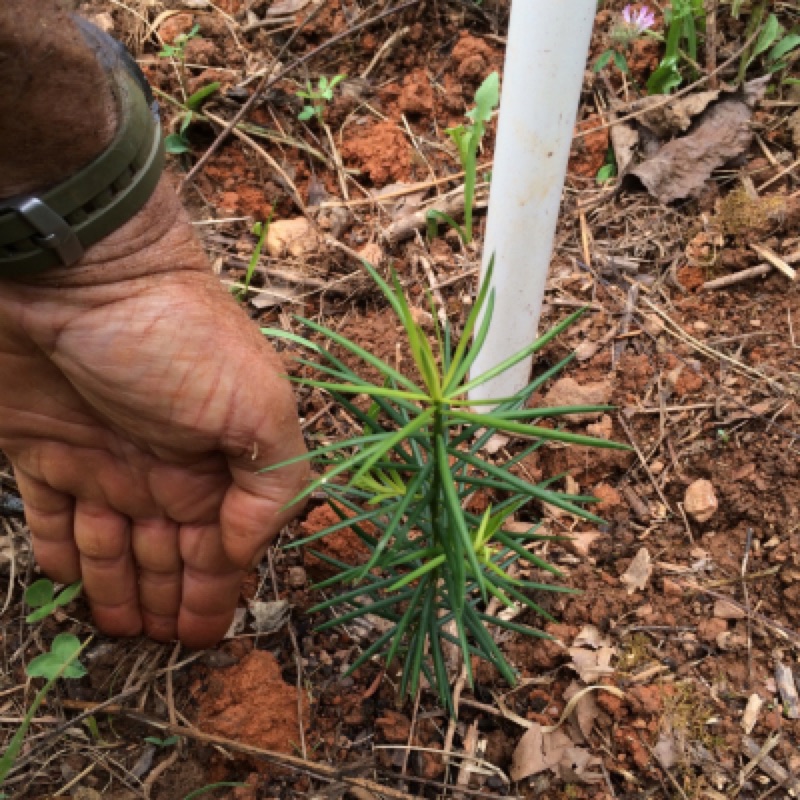 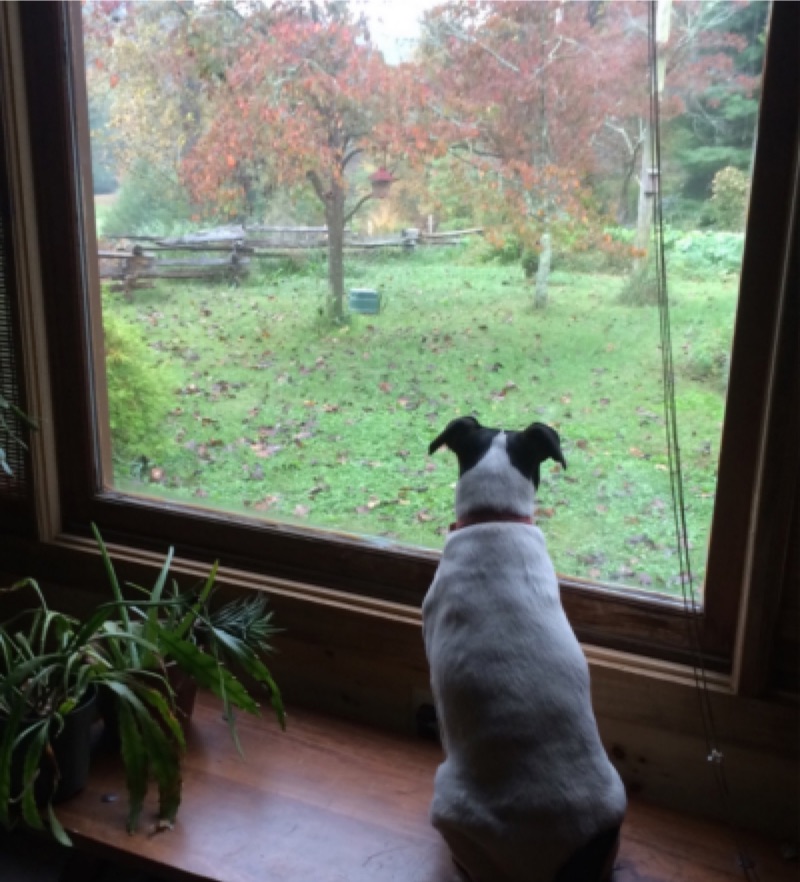 |
|
Lamar's terrier dog, Scout, does a fine job of chasing away the squirrels and eating the voles.
Lamar explained that Scout gives a distinctive bark at rodents, signifying that he needs to be let out to do his job.
Visit Lamar's ongoing PHOTO-ESSAY of his torreya plantings in Cowee Valley, NC.
|
———
Plant-Fungus Reciprocity
MYCORRHIZAE DELIVER VITAL MINERALS: Whether ENDO or ECTO partnerships are forged, very few plants can survive much past the seedling stage if beneficial root fungi are absent. Fungal partners are crucial for extracting phosphorous (and usually nitrogen, too) from the soil and bringing it into the plant's roots. As well, root fungi whose hyphae grow connections that extend into the whole forest network of interconnected fungal tubes, the WOOD WIDE WEB, are capable of delivering photosynthates (sugars) to the growing seedling — especially if the seedling accesses very little sun and thus absolutely requires supplemental sugars after the riches of the seed itself have all been used up.
GIFTS OF SUGAR delivered to the Torreya ultimately come from the full-sun canopy trees that produce sugars in excess. Scientists have not yet determined whether the locus of agency for determining whether an emerging seedling does or does not receive supplemental photosynthates resides in the plant neighbors who create the sugar or, more likely, in the immense, interconnected, and very long-lived fungal web for which successful "gardening" entails ensuring that some new seedlings are assisted in growth long enough to access shafts of sunlight themselves.
RECIPROCITY RULES: Ultimately, the seedlings given a head start by gifts of sugar delivered via the fungal network must reach a point in which they can (a) access sunlight to make their own sugars or (b) halt growth while waiting for the environment to change (e.g., a canopy branch or tree falls which opens up light). The seedling/sapling must be able to find sunlight and make its own sugars not only to grow itself but in order to feed the fungal cells within its roots. Both partners, plant and fungus, must ultimately benefit from the association, or the partnership will be lost. Fungi provide the MINERAL NUTRIENTS (and sometimes also water in a drought). But the plant must reciprocate by FEEDING SUGARS TO THE FUNGAL CELLS.
"Mycorrhizal networks are important for seedling establishment in perennial vegetation. The fact that seedlings that germinate in perennial communities, with existing mycelial networks, often become quickly colonized by mycorrhizal fungi (e.g. within 3 to 6 days after seedling emergence) is probably very important because small seedlings then have immediate access to a low-cost 'nutrient adsorption machine', provided and maintained by the surrounding vegetation." — Marcel Van der Heijden et al., "Mycorrhizal Ecology and Evolution: The past, the present and the future", 2015, New Phytologist
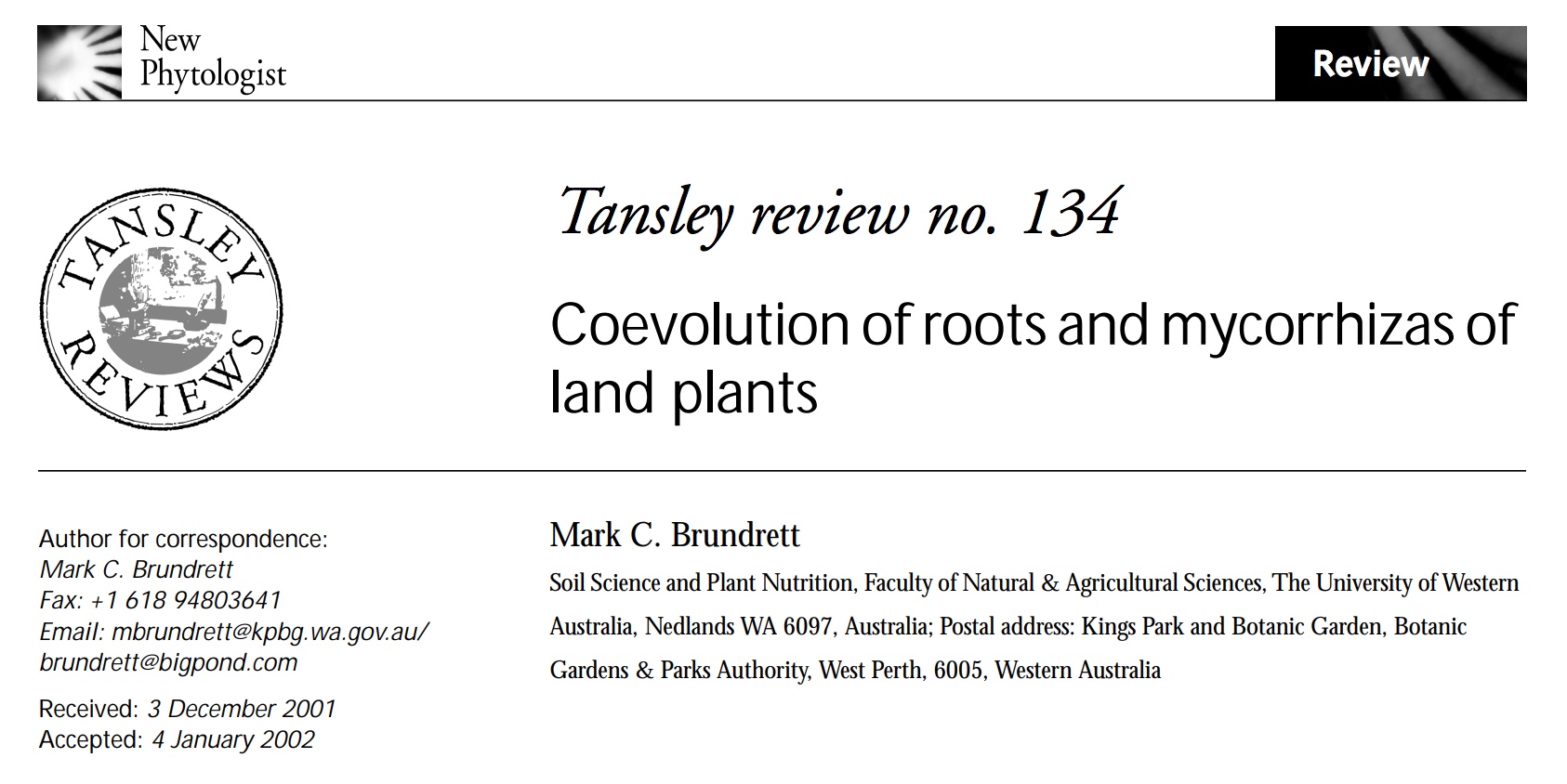
CLICK ON THE ABOVE IMAGE TO ACCESS A HIGHLY RECOMMENDED REVIEW PAPER.
|
|